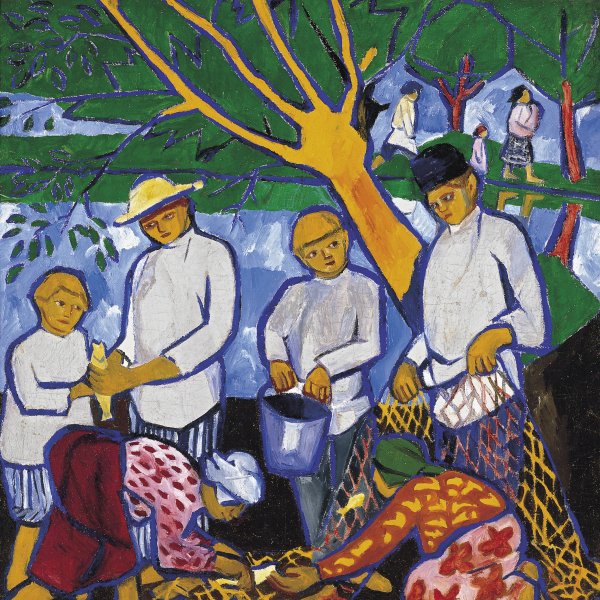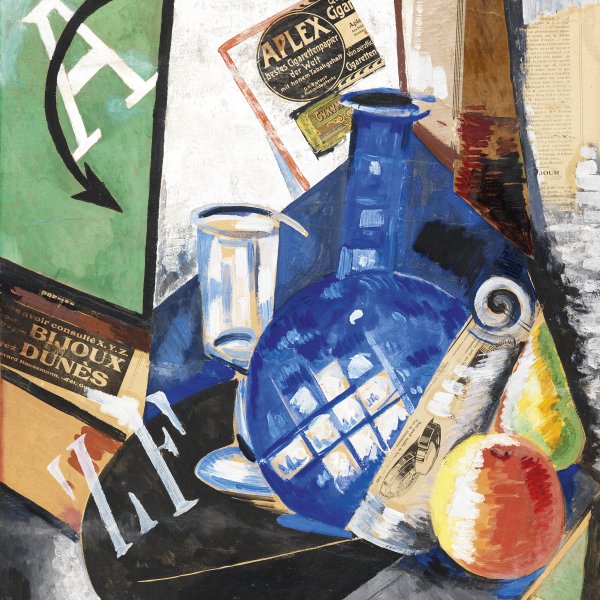The Forest
1913
Oil on canvas.
130 x 97 cm
Museo Nacional Thyssen-Bornemisza, Madrid
Inv. no.
562
(1981.71
)
ROOM 43
Level 1
Permanent Collection
In 1913, the year the present “Rayonist landscape” entitled The Forest is dated, Natalia Goncharova and Mikhail Larionov signed the Rayonist Manifesto. This Russian avant-garde movement was defined by Camilla Gray as the style which “encompasses all existing styles and forms of the art of the past, as they, like life, are simply points of departure for a Rayonist perception and construction of a picture.” According to this new aesthetic idea which, as the American historian specifies, departed from the concept of perception, both artists showed an interest in the nature of vision and began studying light as the indispensable source of our sensory appreciation of the world. Given that, in order for any object to be seen it must be illuminated, the Rayonists represented in painting the whole sequence of rays that allows us to see a particular scene. “We do not sense the object with our eye, as it is depicted conventionally in pictures and as a result of following this or that device, ” they stated in the Rayonist manifesto. “In fact, we do not sense the object as such. We perceive a sum of rays proceeding from a source of light; these are reflected from the object and enter our field of vision.”
The Forest, also entitled Rayonist Landscape or Rayonist Perception, which was shown both in Mishen (Target), the exhibition organized by Larionov in Moscow in 1913 marking the new movement’s introduction to society, and in the solo exhibition of the painter’s work organised by the gallery owner K.I. Mikhailova at his Art Salon in Moscow that year, is an illustrative example of Goncharova’s interpretation of Rayonism. If we compare this painting with Larionov’s Street with Lanterns, also belonging to the Collection, we find that it differs substantially from that of her companion. Whereas Larionov’s Rayonist paintings always give the impression of being rapidly executed experiments, those of Goncharova appear more convincing, more thought out, and more balanced. What is more, although as a rule they contain thematic undercurrents or certain references to the real world, in this case the interior of the forest and the necessary interweaving of coloured rays stretching in different directions give the painting an abstract appearance. Although a short-lived movement, Rayonism was important in that it paved the way for abstraction in Russian art.
Paloma Alarcó
The Forest, also entitled Rayonist Landscape or Rayonist Perception, which was shown both in Mishen (Target), the exhibition organized by Larionov in Moscow in 1913 marking the new movement’s introduction to society, and in the solo exhibition of the painter’s work organised by the gallery owner K.I. Mikhailova at his Art Salon in Moscow that year, is an illustrative example of Goncharova’s interpretation of Rayonism. If we compare this painting with Larionov’s Street with Lanterns, also belonging to the Collection, we find that it differs substantially from that of her companion. Whereas Larionov’s Rayonist paintings always give the impression of being rapidly executed experiments, those of Goncharova appear more convincing, more thought out, and more balanced. What is more, although as a rule they contain thematic undercurrents or certain references to the real world, in this case the interior of the forest and the necessary interweaving of coloured rays stretching in different directions give the painting an abstract appearance. Although a short-lived movement, Rayonism was important in that it paved the way for abstraction in Russian art.
Paloma Alarcó











